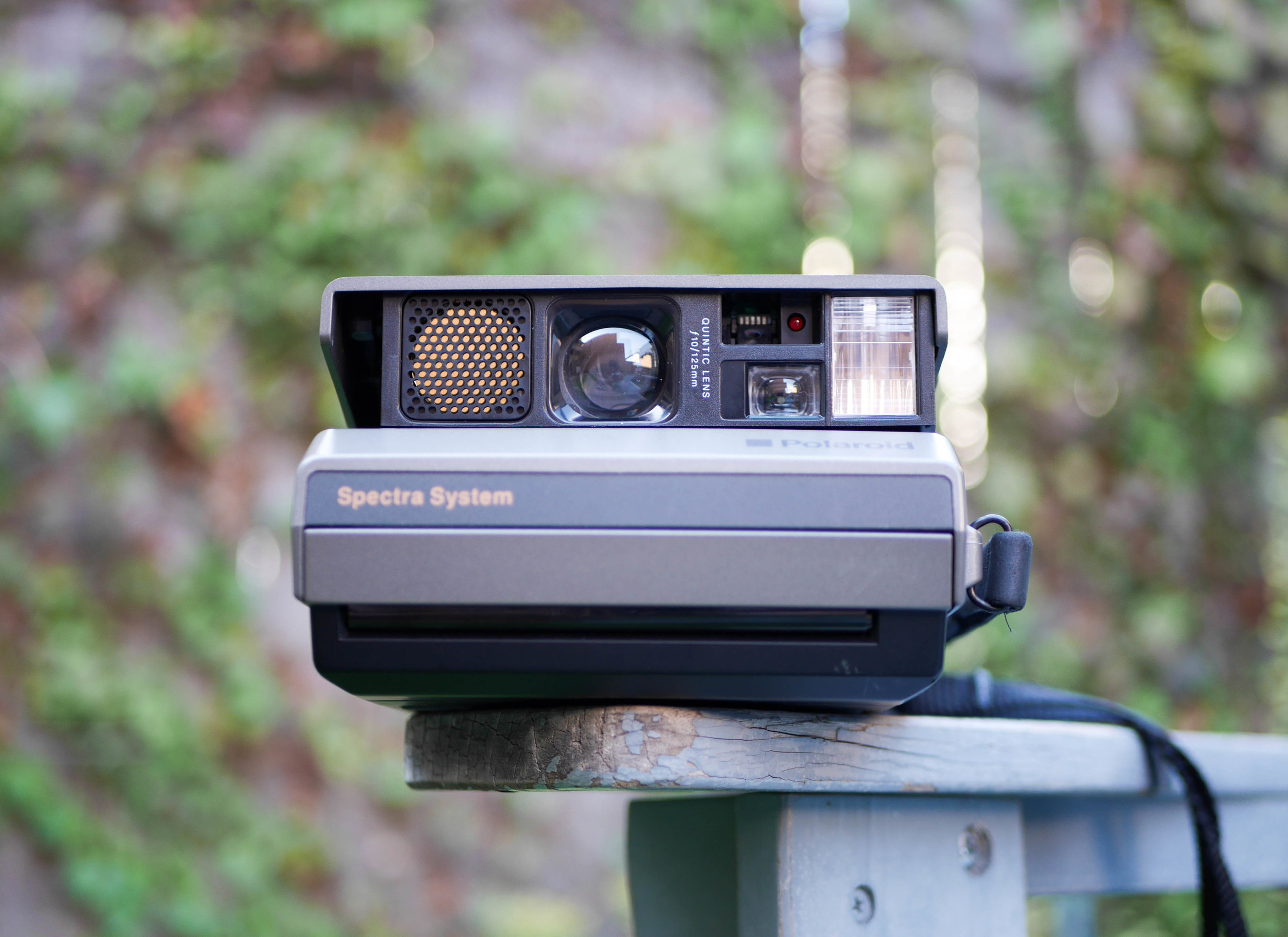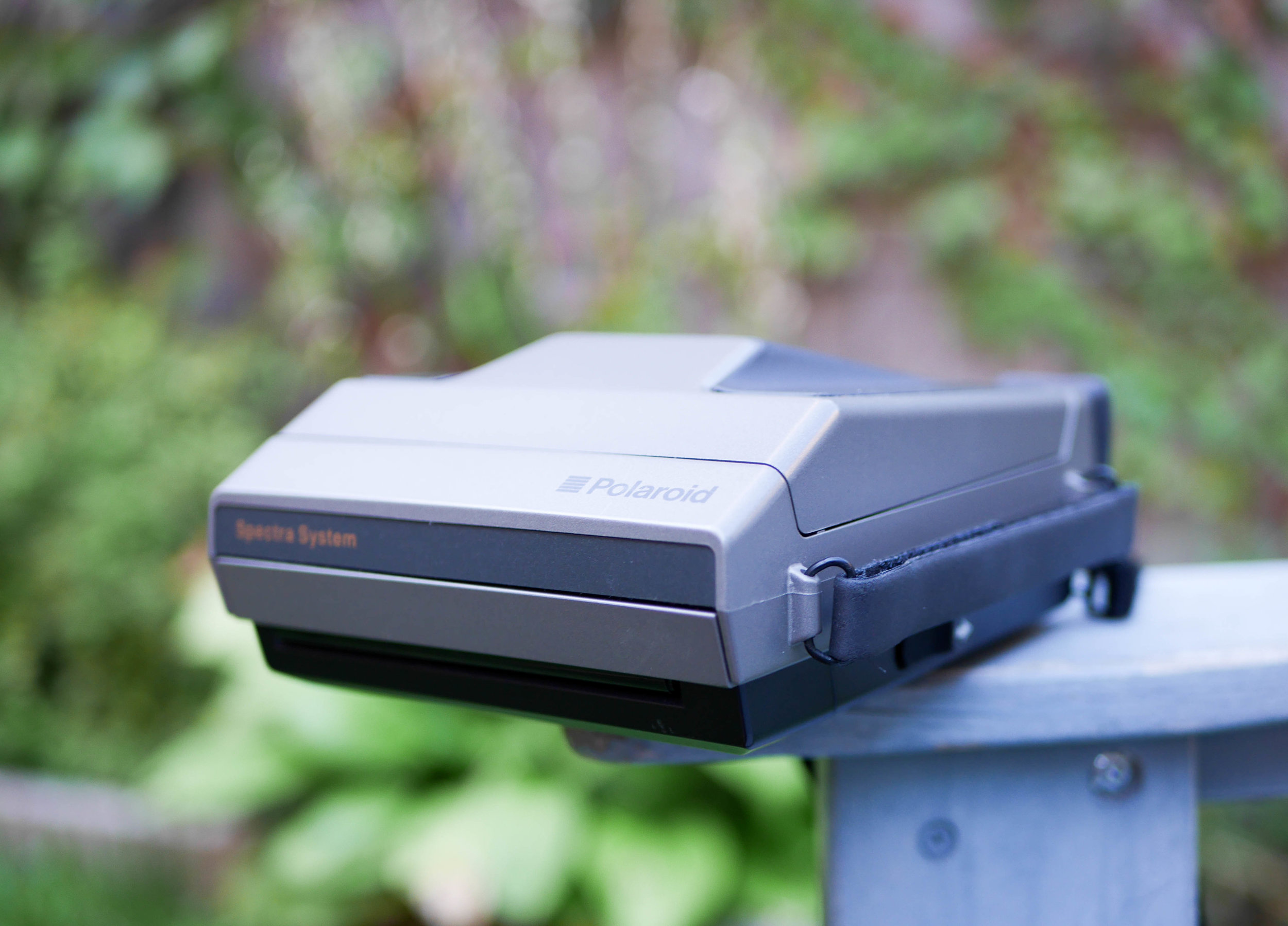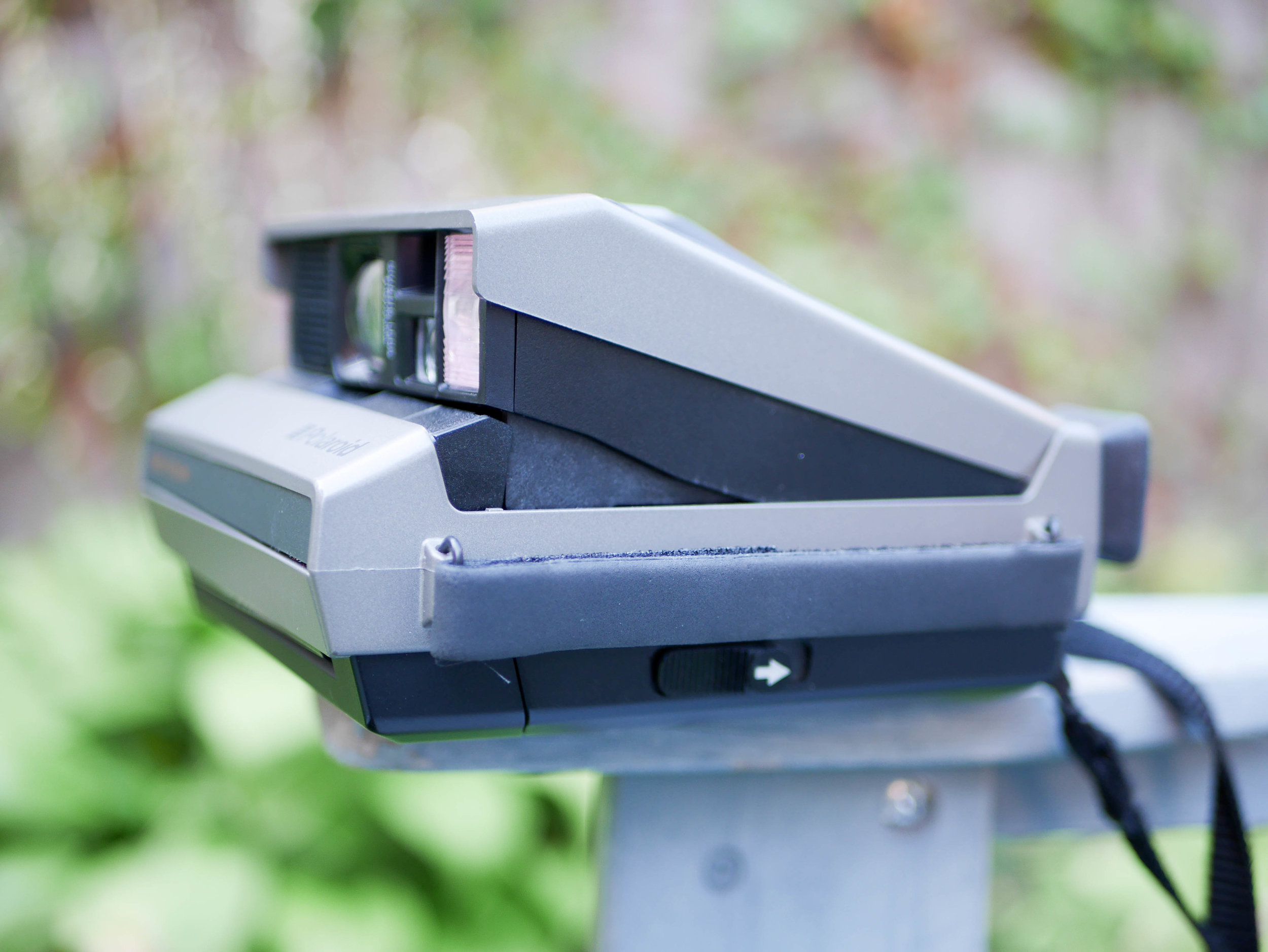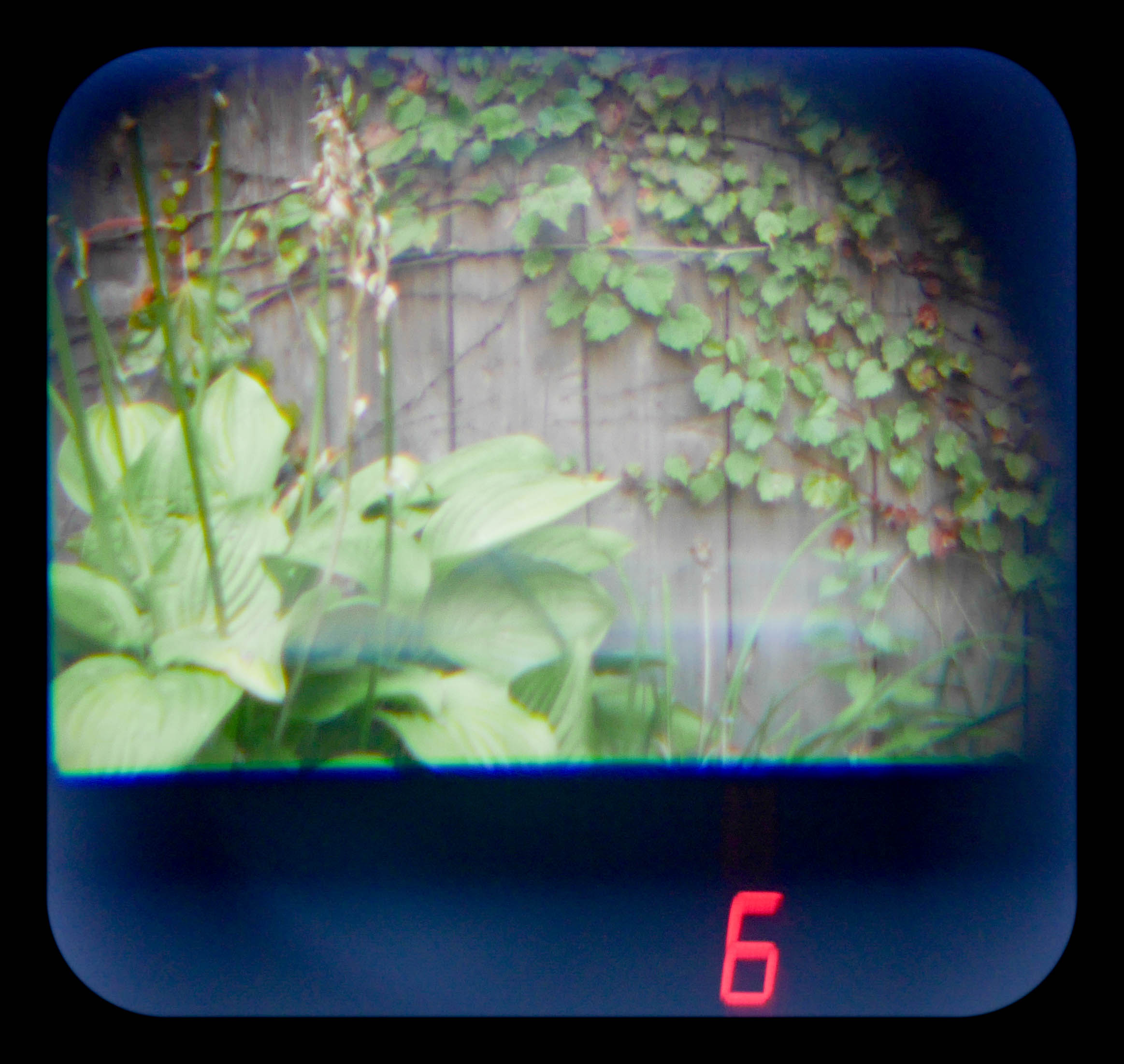Polaroid : Spectra
Review by Gerry Mayer
The Polaroid Spectra was one of the last camera models produced by Polaroid and was released in 1986. Since then the OneStep 2 was released in 2017 by Polaroid Originals (formerly The Impossible Project) was the first step in bringing back Polaroid branded film cameras. Like other Polaroid cameras before it, it folds and pops open like a simple version of the Polaroid SX-70 Land Camera but is styled like a relative of the Polaroid 600 Impulse AF. Different from the 600 film, the Spectra Film is not a perfectly square frame but has a larger and wider frame comparable to a traditional 35mm photo frame, giving the pictures it produces a more cinematic feel. This camera was targeted to prosumers who wanted to take Polaroid photography to the next level and push the limits of the format. The Spectra had accessories available for law enforcement and dentistry industries as well as macro and creative photography lens effects for photographers. Polaroid made serious photography easy with built in flash, sonar autofocus, access to a large amount of controls, and a sharp lens.
With the press of a latch on the side, the Spectra folds down in to a more portable form factor. Functionally, this also protects the lenses and sensors from dust and scratches and emotionally, this action of popping open the camera makes the product feel fun, alive, and ready for action. Since Polaroid cameras are powered by a battery in the film pack, the opening of the Polaroid cameras also has the clever purpose of switching the camera on and off so that the film battery isn't drained when the camera is not in use. The angular outer housing, constructed from plastic, stands out formally from other Polaroid models. The simple color palette of black, dark green-gray, with copper accents reads as more refined and serious compared to most Polaroid 600 models.
The soft velcro adjustable strap along the side of the camera makes holding the camera feel steady when taking a picture. The handle certainly isn't needed but it is something that a professional might appreciate having and adds some additional customization to the camera.
The single button below the strap used to open and close the camera is nicely molded and helps press back this somewhat stiff latch. The graphical arrow is nicely contrasted with the surrounding black plastic. I can imagine someone who has never used the camera before being able to understand how to use this button and might even be nicely surprised when the camera springs to life. This photo also gives a good side view of the camera, showing its angular form. It's neat how the viewfinder eye piece sticks out from the body and gives a familiar, symbolic camera profile to an otherwise unknown angular object.
The top of the Spectra is nicely molded to create two hand grips that are covered with a soft foam like synthetic leather which give it a premium sign value and feel. The radius on the edges of the foam also helps to communicate the softness of this material. The black foam wraps the top of the body closely and catches some dramatic highlights and shadows.
One shutter button can be found on the top of the Spectra which has been nicely dished to contour to the fingertip. The two step autofocus button is nicely highlighted with the use of copper.
On the back of the Spectra there are a ton of controls (for a Polaroid camera) which is a nice change from other models that have their controls divided between the front and back. This view shows some of the injection mold seams on the green-gray plastic which isn't great. For the surface you see most, it would have been better if these seams were more hidden, perhaps under the black control panel or on a different face. It would have also been nice to locate the flash on/off switch with the flash charge and flash ready LEDs because then those extra LED labels might not be needed. This would help to clean up the panel a bit more.
The view finder on the Spectra is fantastic for a non-SLR camera, making up for the slight misalignment of the frame by giving a clear LED display of the focus distance calculated by the sonar auto focus.
Flipping the camera over, reveals a threaded hole for a tripod as well as more soft foam for your thumbs. This foam also keeps the bottom of the Spectra from scratching when places on a surface. The sides of the black plastic piece have a deep chamfer that are comfortable to grip against while at the same time giving the perception of less volume on the bottom of the camera making it feel slightly less boxy.
The front of the camera is also packed with sensors. The main one being the sonar auto focus sensor which has also been finished in matching copper. This auto focus works by sending out a high frequency audio chirp that bounces off a surface in front of the camera and tells it how far away to focus.
The Spectra is well known for its high quality "Quintic" lens which is a three element plastic lens that has the ability to move internally and auto focus based on the sonar result. The arrangement of the items on the front, though jam packed looks balanced thanks to the cosmetic, wide cutouts around the viewfinder and light meter that are located between the flash and camera lens. The front also reveals the robust thickness of the green-gray plastic shell that nicely matches the boarder around the branding panel.
To the left of the sensors, a film door release level is revealed only when the Spectra is open. This was a clever hierarchical design choice so that the user doesn't accidentally open the film door and expose the film to light when trying to open the camera. The textured surfacing of the button is consistent with the camera opening button which gives consistent form language that these buttons affect the physical features of the camera.
Overall, the Spectra is very nicely designed with a sturdy build quality and attention to detail that draws a comparison to the build quality of the SX-70 Land camera. Its form and finish set it apart from the simple to use 600 line into a serious tool for professionals. It appears to draw a bunch of design inspiration from the F-117 Nighthawk Stealth Fighter which was introduced to the public just three years prior to the release of the Spectra, well within a reasonable product development cycle for a new Polaroid format camera. This aircraft was so different and novel that maybe it was an inspiration for the angular ID form language of the 80s. This also speaks to the military roots of the Polaroid company that got its roots from developing stereo-image bomber cameras during World War II. Who knows if this is true, just a thought I was having as I wrap this review up! In a lot of ways, the design of the Spectra is likely polarizing, drawing very different opinions from people who see it. This stealthy Polaroid camera doesn't seek attention but delivers fantastic performance.















